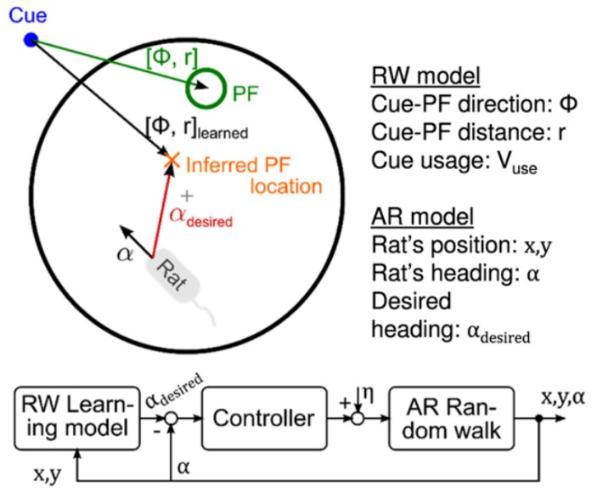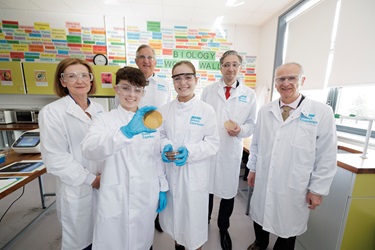Learning how to navigate.
How do animals learn how to get from one place to another? In 2014, the Nobel Prize for discovering an “inner GPS” in the brain was awarded to John O’Keefe, May-Britt Moser and Edvard J Moser. They discovered nerve cells in the brain that activate and fire electrical pulses when rats are in a certain position or move in a certain direction. These findings provided a cellular basis for higher cognitive function; knowing where we are and knowing where we are going. But how animals use this information is currently a matter of debate. Do they develop a mental map of the entire environment (cognitive map theory)? Or do they simply learn landmarks as signposts that can direct them towards the goal?
Our recent work suggest that animals use the later strategy and only use the most important landmarks to learn direction and distance information as required. At least for the simple navigational tasks that are used in laboratory settings, such as the Morris water maze, learning a complete map of the entire environment is not required.

Using a classical systems biology cycle combining theory and experiment, we constructed a mathematical model of how animals learn to solve the Morris water maze task. This task requires animals to escape from a pool of water by finding a platform (PF), hidden just below the surface. As animals cannot see the platform directly, they must use the cues surrounding the maze to find the goal. Our model integrates i) a low-level model of how animals move and direct their movements (AR model) using visual feedback and a control loop that involves hippocampal regions in the brain, and ii) a high-level cognitive model (RW model) that describes how animals learn a cue from the environment, increasingly associate it over time with the goal, and use its directions and distance information.
With this model we could separate distance and directional components of each cue, and vary the relative importance and location of each cue. This allowed us to examine how each of these components can affect learning by comparing the results of the model to experimental data. For example, in our setup, we show that directional information from a far cue leads to more accurate searching compared to the cue’s distance information. Whereas, distance information from the nearer cue proved to be better compared to its directional information. But we also show that the usefulness of a particular cue and whether one component gains greater control over the other depends very much on the location of the cues relative to the goal.
A key finding of our model is that each cue provides distance and direction information that can be learned independently, a concept supported by behavioural studies in pigeons and honeybees and neural studies in rats that found head-direction cells in the brain. Further, the model could explain a number of scenarios that provided a good account of generalised learning phenomena (e.g. stimulus generalisation in which the learning of one cue is applied to the other, and overshadowing in which the presence of additional cues interferes with the proper learning of a cue), as well as data from different species such as gerbils and Clark nutcrackers.
In summary, the work offers an associative model of landmark learning and supports the idea that learning an entire map is not required. In addition to the experiments already considered in this work, the model could be used to contemplate many other learning scenarios. Comparing these computer simulations with experiments could help to gain deep insight into the cognitive functions that constitute learning and navigation.
Cited study:
Other references:
Diviney M, Fey D, Commins S. Hippocampal contribution to vector model hypothesis during cue-dependent navigation. Learning & Memory. 2013; 20(7):367-78.
Fey D, Commins S, Bullinger E. Feedback control strategies for spatial navigation revealed by dynamic modelling of learning in the Morris water maze. Journal of computational neuroscience. 2011; 30(2):447-54.
https://www.nobelprize.org/prizes/medicine/2014/summary/

About the Author:
Dr. Dirk Fey leads the Cancer Dynamics and Modelling group in Systems Biology Ireland. His aim is a quantitative understanding of cancer related signalling networks across the scales ranging from the intracellular to the organism level. He holds a PhD with “European” distinction from the University of Liege, Belgium and a MEng in Engineering Cybernetics from the University of Stuttgart. Dirk’s career path included industry and several academic institutions, including BASF Ludwigshafen and Thomas Jefferson University, Philadelphia. He has won several scientific prizes, most recently the Irish Laboratory Award 2017 for Collaboration Achievement.

